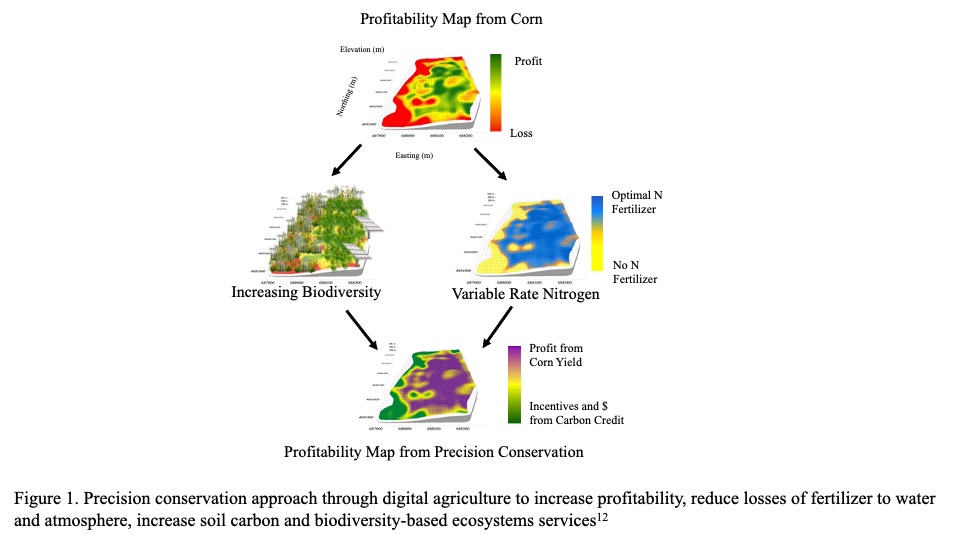Precision Conservation - Agricultural sustainability and climate solutions by digital design

A Faculty Voice article by Bruno Basso
The current agricultural system needs to adapt to become more efficient and circular on less farmland to address climate change threats. Agriculture will be called on to feed a growing population while reducing greenhouse gas emission to the atmosphere and improve efficiency in the use of other increasingly scarce resources.
Over the course of my career, I have pioneered the use of digital agriculture technologies mainly through integrated geospatial crop simulation models and remote sensing image analysis to understand and predict how the interaction between soil, climate, genetics and management affect spatial variability of crop yields, water and nutrient fluxes across the landscape, and ultimately the sustainability of agricultural systems. The results of my research have lead me to strongly support the role of digital agriculture to mitigate the environmental impacts caused by inefficient management strategies, utilizing vast amounts of data to enhance farming management decision-making.
In a recent article I published in Nature Food, I discuss the need for converting areas of fields that were previously identified as being unprofitable or environmentally unsustainable to native vegetations (e.g. wildflower patches to support pollinators) or second generation bioenergy crops to reduce the N fertilizer losses, increase biodiversity, increase soil carbon sequestration and reduce greenhouse gas emissions. This approach, commonly referred to Precision Conservation, can lead to substantial climate benefits through greater capture of CO2 from the atmosphere stored in their deeper and perennial root systems, and avoided emissions from N fertilizer no longer needed to grow these crops. In high-yielding areas of the same field, farmers can sustainably intensify crop production knowing that the plants will respond positively to input as shown by their digital agriculture data.
In another recent article published in the Proceedings of the National Academy of Sciences, we demonstrated how digital agriculture technologies coupled with regenerative management practices can allow agriculture to become the first sector to be net negative emission in the next 15-30 years. Greenhouse gas emissions could already be reduced substantially (~40%) if N fertilizer is only applied in parts of the field where the plants respond to it. Other novel technologies include electrical tractors, robots, novel biological fertilizers, and new genetics with new mechanisms to send carbon fixed from the atmosphere to grains as well as to deeper roots. The overall net negative emission from agriculture can reach -70% compared to the current linear systems.
The challenges for adopting new sustainable technologies and will remain unless we provide policy incentives to farmers. To increase the adoption of these technologies, farmers, environmentalists, scientists and policymakers need to establish consensus policy goals around increasing biodiversity, reducing nitrogen fertilizer use, decreasing greenhouse gas emissions, and considering more diverse crop rotations including less resource-intensive bioenergy perennials. Agricultural systems are extremely heterogenous, so solutions will consequently require innovative and diverse policy institutions. Digital agriculture can provide the wealth of information necessary to inform these governance models, but additional support and continued education must be provided to farmers and other stakeholders to effectively take advantage of this agricultural revolution.



